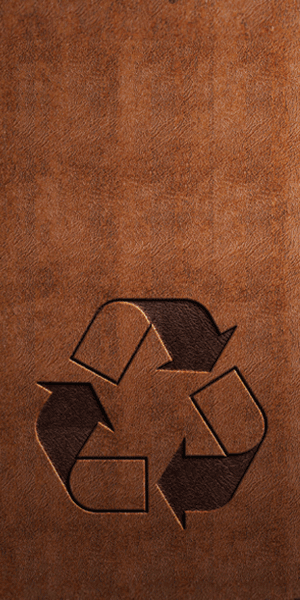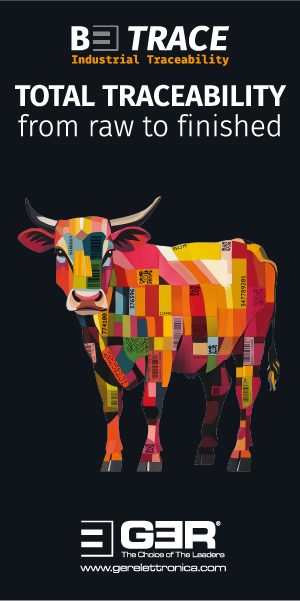Market Intelligence - 05.01.21
Macroeconomics
The start of 2021 has been relatively uneventful. The western world took the chance after the very challenging start to the new decade to take a bit of a rest and to have as peaceful and relaxing a Christmas and New Year holiday as possible. For many families it was a challenging time because the usual rituals and customs were not possible for many. In particular families that are big and spread around had the difficulty in meeting and to celebrating as a group. In most cases families decided not to take any risk and to stay apart.
This leads us already to the major headline for the past two weeks, which has been almost exclusively the situation around the covid-19 virus again. Almost everyone is now in the daily routine of checking the numbers of infections locally, regionally and internationally, with the never-ending hope that a miracle might happen and suddenly the infections and disease would just disappear.
However, this has not happened and so the world in general has had to deal with the pandemic in 2021 as in 2020. Even in China, where the situation is supposed to be under very tight control, we hear of new outbreaks scattered around the country. The government takes the same, very strict action to control the situation there, knowing that new lockdowns and preventing the people from travelling for the Chinese New Year holiday, which falls on February 12, would not be very welcomed by the public.
Donald Trump still seems to be struggling to accept defeat in November’s presidential elections and seems still to hope that he can somehow turn the situation in his favour. This is increasingly unlikely.
The UK has finally left the European Union, with a deal in the end. Those who were in favour of leaving are celebrating their new freedom. Those who have read and analysed the papers have quickly understood that EU regulations will still have an important role in the British economy. The UK will still have to follow many aspects of the administration and bureaucracy of the European Union, but will now have no influence on the decisions taken in Brussels any more. Since leaving the EU is unknown territory the coming years will show the real effects on people and the economy. It would have been good also to see in the documents a paragraph laying out a simple way for the UK to return to the European Union one day if the democratic position in the country changes. In this respect, it might be a help if the conditions and regulations between the UK and the EU remain in place for a while.
The stock markets ended the year at a pretty stable level and began the new one on a very firm note, which, however, only lasted a few hours before most of the stock markets turned into negative territory. Investors had obviously entered the New Year with a lot of hope for vaccinations against covid-19 and, at the same time, betting on easy and cheap money for investments in the year to come. It seems it had taken them not too long to review their positions and to understand that, in whatever way, the pandemic will still weigh heavily on business around the globe for the foreseeable future. In the best of all cases we might see some kind of the general improvement in the second quarter, but how the global economy and global consumers have been affected on this long road we have been on is still unknown. Even with interest rates being low, one day the taxpayer will receive the bill for what is being injected into economies to help individuals and corporations at the moment. There has never been, and there will never be, a free lunch.
Gold was able to maintain its gains while oil prices, in sympathy with the general fall in optimism, dropped. A barrel of oil still costs around $50; this can also be considered as a relatively positive indicator for the year ahead of us.
Leather Pipeline
From all our sources we understand that some interesting purchasing activity was still recorded from China over the holidays. In particular around Christmas, Chinese buyers, in particular from the northern provinces, remained interested in hides but when they realised that there was no particular Christmas bargain or scared sellers around, they reluctantly opted to pay close to what was asked. However, volumes were relatively small and with a very low kill we do not believe that this activity can be considered to be indicative of the wider market situation.
It is very likely that the coming weeks will give us a much clearer indication of what we can expect in the coming months. The main trends still remain the same. As long as the production lines in the automotive industry continue to run at relatively stable levels, the demand for automotive leather will also continue at current levels. Some well informed pundits in the industry are telling us that several brands are considering some downward adjustment in the production of certain models; they would rather see their existing stocks of cars sold first.
This may also put some light on a major problem in the automotive industry, in particular in Europe. We see a great imbalance between the models selling relatively well and those that attract few buyers. This is, of course, related to several different factors. One is certainly the expected transition from combustion engines to electronic mobility. If you still own a car that serves you well, why should you bother to take a decision today to invest in something that may or may not be the future?
There is a lot of hype about e-mobility, but for many people there are still a lot of unanswered questions around it. If the cars are not heavily subsidised by governments, they are extremely expensive and nobody knows what the second-hand value of these vehicles might be. This makes them attractive to early adopters with leasing contracts and fixed conditions so that the normal person in the street is not running any particular personal risk in trying them out. In many countries, the breakthrough of e-mobility is hailed as having happened already.
No matter what happens in the future of mobility it will definitely be extremely complicated. This is probably not good news for leather consumption. It is unlikely that the boom era of automotive leather can be further extended. The future of mobility will not be a uniform trend and it will not happen from one day to the next. Nor will it happen everywhere in the world at the same time, but it is pretty obvious that the automotive brands are unlikely to keep supporting leather in the interior for the coming years.
If consumers ask for a living-room style interior in their autonomous, battery-driven cars is the next breaking point. In a timeframe of about 10 years, many questions will come up about what cars will look like and what the interior design is going to be, but we might also see that private ownership of vehicles may decline and new mobility concepts will require fewer cars. Such a trend could affect the material decisions by quite a bit.
We are now entering the final lap of the production season for furniture upholstery. Higher leather prices will reduce demand for upholstery leather we have to assume that the longed-for lifting of restrictions on people’s lives that a widespread vaccination programme might bring will lead to less focus on home life and more on all the nice things we have had to put on hold for such a long time: travel, holidays, restaurants and street shopping, all of which might mean a pause in interest in furniture upholstery.
This is what the luxury brands are betting on. They believe that, in addition to their success in online marketing (in particular in China), they can bring back their regular customers around the globe immediately when the pandemic restrictions are lifted. It’s an interesting question but it’s difficult to predict how many people will think first of buying a handbag for a couple of thousand dollars when ‘normal life’ returns. For the wealthy this might be an option, because their private budget situation has not been seriously hit and they have not had to change their habits so much. Just check social media and magazines and you will see how many of the wealthy have never stopped travelling and posting pictures from the nice, sunny places around the globe even when normal travel was almost blocked.
However, a lot of income this year will be lost, even with all the government help. It is unlikely that everyone is going to keep the same job with the same pay, which might also change spending attitudes a little. The possible problems of income and of the labour market might expand well into the upper end of the middle class as well.
The biggest question mark is certainly around the shoe market. We haven’t noticed any particular new fashion trends and, with the exception of China and some other countries in the Far East, the consumption of shoes has been one of the hardest hit parts of the industry during the pandemic. But shoes could be one of the sectors to profit most after the pandemic. However, it desperately needs a boost from the world of fashion. Many are predicting a return of the roaring 20s that we saw in the last century and this would consequently mean more social events, more parties, more fun, all of which usually goes hand-in-hand with new fashion trends. The leather and the shoe industry should be well aware of this and that designers and trendsetters will want to ride the wave. We see massive opportunities, but it will require some initiative and some optimism from all the parties who have to turn the potential into reality.
For the coming weeks we expect a slow start. Companies and the public will now watch how the vaccination programmes progress. We have tests and scientific results, but we do not have any broad-based knowledge about the results of the vaccination. How long will immunity last? Could you still spread the virus? It looks good, but the virus is also very smart and it could mutate in new directions.
To leave the virus aside for a moment, we must also talk about logistics. Overseas transport has become a total nightmare. Barely a single ship sails according to schedule and if you get all your containers on board on time, the time you will have to wait for them to arrive is uncertain. It’s better not to speak about the price one has to pay. We tend to believe that it will take another couple of months until all this is straightened out again. It would not be a surprise if the situation for the shipping companies quickly changed again later this year; many customers will definitely remember how they were treated this winter.
The biggest driver in the market is still China and it will soon be the holiday season there. Traditionally the Chinese manufacturing base remains very active and optimistic until the holiday and some of the momentum continues into spring. However, always in the past, with or without the pandemic, enthusiasm fades as the sun begins to shine. This should also be taken into consideration, because the entire leather pipeline depends more than ever at the moment on Chinese production and consumption. Let’s hope we can restore activity in other parts of the world as, most likely, Chinese activity will decline in the second and third quarters. There is no reason why we should not hope for this, but we have to be careful at the same time.












